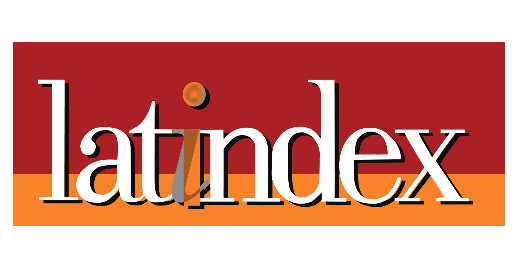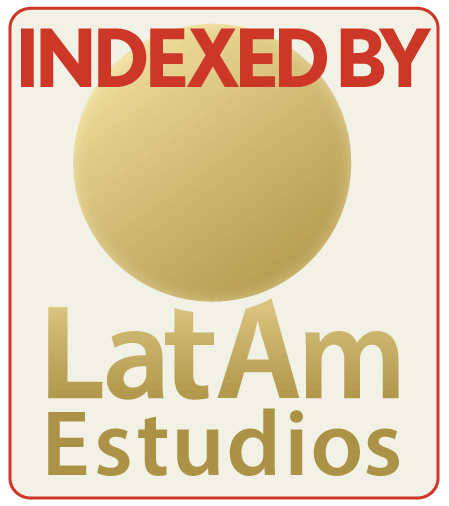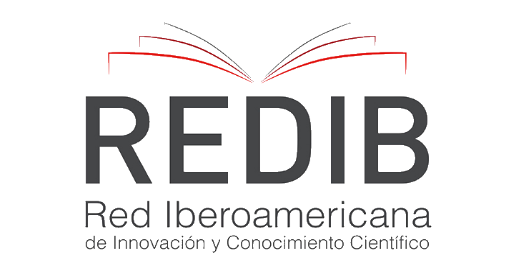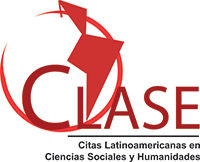Indicadores ambientales como indicadores de Corrupción: Un enfoque econométrico del crecimiento económico en México
Environmental Indicators as Proxies for Corruption: An Econometric Approach to Economic Growth in Mexico
##plugins.themes.bootstrap3.article.main##
Este estudio evalúa la relación entre la corrupción y los indicadores ambientales, específicamente la densidad de árboles y el Índice de Vegetación de Diferencia Normalizada (NDVI), en los estados de México.
Se aplicó un modelo de regresión de validación cruzada Ridge (RidgeCV) para mitigar la multicolinealidad y corregir la endogeneidad. El conjunto de datos incluye información económica y ambiental de 32 estados de México. Los resultados muestran que la densidad de árboles se correlaciona negativamente con la actividad económica, mientras que el NDVI tiene un impacto marginalmente positivo. Estos hallazgos sugieren que la deforestación puede estar impulsada por factores económicos y de gobernanza, lo que resalta el papel de la degradación ambiental como un indicador de corrupción. Este trabajo contribuye a la economía institucional al proporcionar evidencia empírica para el diseño de políticas públicas sostenibles y mejorar la medición de la corrupción a través de indicadores ambientales.
Descargas
##plugins.themes.bootstrap3.article.details##
Acemoglu, D., & Robinson, J. A. (2012). Why nations fail: The origins of power, prosperity, and poverty. Random House.
https://doi.org/10.1355/ae29-2j
Bakhsh, S., & Ahmed, V. (2022). Environmental degradation, corruption, and economic growth: Evidence from Asian economies. Environmental Science and Pollution Research, 29, 32687-32704.
Brondízio, E. S., Aumeeruddy-Thomas, Y., Bates, P., Carino, J., Fernández-Llamazares, Á., Ferrari, M. F., & Shrestha, U. B. (2021). Locally based, regionally manifested, and globally relevant: Indigenous andlocal knowledge, values, and practices for nature. Annual Review of Environment and Resources,46(1), 481-509.
https://doi.org/10.1146/annurev-environ-012220-012127
Buehn, A., & Lessmann, C. (2021). Fiscal decentralization and corruption: New evidence from broad panel data. Kyklos, 74(4), 578-604.
Burgess, R., Hansen, M., Olken, B. A., Potapov, P., & Sieber, S. (2012). The political economy of deforestation in the tropics. The Quarterly Journal of Economics, 127(4), 1707-1754.
https://doi.org/10.1093/qje/qjs034
Burki, S. J., & Perry, G. E. (1998). Beyond the Washington consensus: Institutions matter. World Bank Publications.
https://doi.org/10.1596/0-8213-4282-7
Chazdon, R. L. (2008). Restoring forests and ecosystem services on degraded lands. Science, 320(5882), 1458-1460.
https://doi.org/10.1126/science.1155365
D'Agostino, G., Dunne, J. P., & Pieroni, L. (2016). Government spending, corruption and economic growth. World Development, 84, 190-205.
https://doi.org/10.1016/j.worlddev.2016.03.011
Dell, M. (2010). The persistent effects of Peru's mining mita. Econometrica, 78(6), 1863-1903.
https://doi.org/10.3982/ECTA8121
Dong, B., & Torgler, B. (2020). Corruption and social trust: The mediating role of institutional quality and the moderating role of income inequality. European Journal of Political Economy, 63, 101882
Drury, A. C., Kieckhaus, D., & Lusztig, M. (2006). Corruption, democracy, and economic growth. International Political Science Review, 27(2), 121-136.
https://doi.org/10.1177/0192512106061423
Food and Agriculture Organization of the United Nations (FAO). (2020). The state of the world's forests 2020: Forests, biodiversity, and people. FAO.
Gründler, K., & Potrafke, N. (2019). Corruption and economic growth: New empirical evidence. European Journal of Political Economy, 60, 101-115.
https://doi.org/10.1016/j.ejpoleco.2019.08.001
Gupta, S., Davoodi, H., & Alonso-Terme, R. (1998). Does corruption affect income inequality and poverty? IMF Working Paper No. 98/76. International Monetary Fund.
https://doi.org/10.5089/9781451849844.001
Huntington, S. P. (1968). Political order in changing societies. Yale University Press.
INEGI. (2023). Encuesta Nacional de Calidad e Impacto Gubernamental (ENCIG). Instituto Nacional de Estadística y Geografía. https://www.inegi.org. mx/programas/encig/2023/
Kudamatsu, M., Persson, T., & Stroebel, J. (2012). Weather and infant mortality in Africa. American Economic Review, 102(4), 1915-1948.
Leff, N. H. (1964). Economic development through bureaucratic corruption. American Behavioral Scientist, 8(3), 8-14.
https://doi.org/10.1177/000276426400800303
Mauro, P. (1995). Corruption and growth. The Quarterly Journal of Economics, 110(3), 681-712.
https://doi.org/10.2307/2946696
Mbow, C., Smith, P., Skole, D., Duguma, L., & Bustamante, M. (2014). Achieving mitigation and adaptation to climate change through sustainable agroforestry practices in Africa. Current Opinion in Environmental Sustainability, 6, 8-14.
https://doi.org/10.1016/j.cosust.2013.09.002
Meón, P. G., & Weill, L. (2010). Is corruption an efficient grease? World Development, 38(3), 244-259.
https://doi.org/10.1016/j.worlddev.2009.06.004
Monroe, M. C. (2003). Two avenues for encouraging conservation behaviors. Human Ecology Review, 10(2), 113-125.
Olken, B. A. (2007). Monitoring corruption: Evidence from a field experiment in Indonesia. Journal of Political Economy, 115(2), 200-249.
https://doi.org/10.1086/517935
Paldam, M. (2002). The cross-country pattern of corruption: Economics, culture and the seesaw dynamics. European Journal of Political Economy, 18(2), 215-240.
https://doi.org/10.1016/S0176-2680(02)00078-2
Pagiola, S. (2008). Payments for environmental services in Costa Rica. Ecological Economics, 65(4), 712-724.
https://doi.org/10.1016/j.ecolecon.2007.07.033
Pettorelli, N., Vik, J. O., Mysterud, A., Gaillard, J. M., Tucker, C. J., & Stenseth, N. C. (2005). Using the satellite-derived NDVI to assess ecological responses to environmental change. Trends in Ecology & Evolution, 20(9), 503-510.
https://doi.org/10.1016/j.tree.2005.05.011
Rose-Ackerman, S. (1975). The economics of corruption. Journal of Public Economics, 4(2), 187-203.
https://doi.org/10.1016/0047-2727(75)90017-1
Secretaría de Medio Ambiente y Recursos Naturales (SEMARNAT). (2020). Ley General de Desarrollo Forestal Sustentable. https://www.gob.mx/ semarnat/documentos/ley-general-de-desarrolloforestal- sustentable
Stavins, R. N. (2000). Market-based environmental policies. Public Economics Review, 12(2), 243-265.
https://doi.org/10.4337/9781035363155
Transparency International. (2020). What is corruption? https://www.transparency.org/en/what-iscorruption Transparency International. (2023). Corruption
perceptions index 2023. https://www.transparency. org/en/cpi/2023/
Voskanyan, F. (2000). A study of the effects of corruption on economic and political development. Centre for Strategic and International Studies. https:// csis.org/publication/study-effects-corruptioneconomic- and-political-development
Lember, V., Kalvet, T., & Kattel, R. (2014). Public sector innovation: Case studies and research perspectives. Public Management Review, 16(1), 23-30.
https://doi.org/10.1007/978-3-642-40258-6_1
Millan-Lopez, A. J. (2024). Corrupción institucional observada desde el espacio. Sobre México Temas de Economía, 9(1), 55-82.
https://doi.org/10.48102/rsm.v1i9.146
World Bank. (2022). Worldwide governance indicators. https://info.worldbank.org/governance/wgi/
Zhang, J., & Daly, K. (2021). Corruption, innovation and economic growth: Evidence from emerging and developing countries. Economic Systems, 45(4), 100888.


































